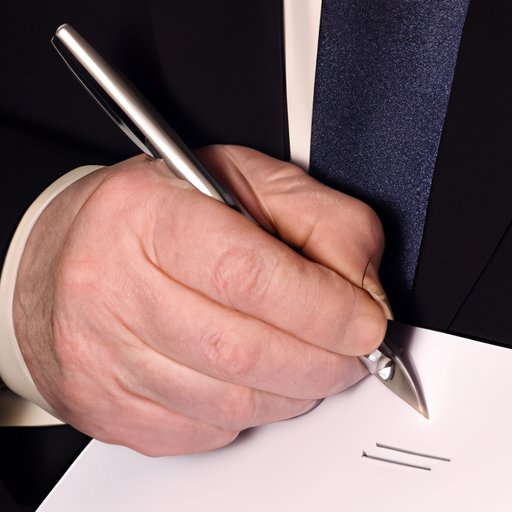
Introduction
A business letter is an essential tool for making professional connections in the corporate world. Just like any other type of formal communication, a correctly written business letter must have a well-structured introduction. It sets the tone and prepares the reader for the rest of the letter. This article is a comprehensive guide on how to write an effective business letter introduction that will help you communicate with confidence. Whether you are a beginner or looking to improve your writing skills, this guide will help you start your business letter like a pro.
The Ultimate Guide to Crafting a Professional Business Letter: A Step-by-Step Tutorial for Beginners
A business letter is a formal written message sent from one company to another, from an organization to a client, or from one individual to another, with a particular purpose. A typical business letter consists of several essential components, including the date, address of the sender, the recipient’s address, the subject line, and the body of the letter, which must always be well-structured, concise, and professional. When crafting your business letter, make sure you proofread it for any errors and ensure the information is accurate.
Perfecting the First Impression: Tips and Techniques for Starting a Business Letter
The opening statement of your business letter is crucial. It shapes the reader’s impression of you and sets the tone for the rest of the letter. There are several techniques you can use to grab the reader’s attention and make a strong first impression. One of the best ways to do this is by starting with a question that aligns with the objectives of the letter. Alternatively, you could begin with a powerful quote that resonates with the topic of the letter. You could also use humor or a personal anecdote, depending on the nature of the letter.
From Greetings to Signatures: A Comprehensive Guide to Start Your Business Letter Right
The greeting is the first point of contact between the sender and the recipient, and getting it right is essential. The type of greeting you use depends on the relationship you have with the recipient and the level of formality required for the letter. For instance, if you are writing to someone you know well, you could use a casual greeting such as “Hi” or “Dear.” If you are writing to someone you don’t know well, you should use a more formal greeting, such as “Dear Sir/Madam” or “To whom it may concern.”
The closing statement also plays a crucial role in the success of your business letter. A strong closing will leave a lasting impression on the reader and compel them to act on what was written in the letter. It is essential to sign off with an appropriate salutation. The closing you choose will depend on the tone of the letter, your relationship with the recipient, and the level of formality required. Use closing salutations such as “Sincerely,” “Respectfully yours,” or “Best regards.”
The Art of Communication: How to Start Your Business Letter With Confidence
It is essential to use appropriate language and tone in your business letter to ensure effective communication. Keep the tone professional and objective, show empathy, and maintain a respectful attitude throughout the letter. The language used should be clear, concise and free from grammatical errors. Always proofread the letter several times to ensure that there are no mistakes.
Breaking Down the Elements of a Successful Business Letter Introduction
There are several elements that make up a successful business letter introduction, including the hook, background information, and the thesis statement. A hook is an opening statement that captures the reader’s attention and encourages them to read on. Background information provides context for the topic of the letter and helps the reader understand the purpose of the letter. The thesis statement is the main point of the letter and should be stated clearly and concisely.
Conclusion
In conclusion, starting a business letter is vital in setting the tone for the rest of the letter and making a lasting impression on the reader. By following the methods outlined in this article, you can ensure that your business letter is professional, concise, and engaging. Remember to use appropriate language, show respect, and proofread the letter several times to avoid any grammatical errors. With time and practice, you’ll be crafting effective and professional business letters that are sure to help you make a lasting impact.





